The Best Hamstring Exercises To Add To Your Workouts
Strengthen the back of your thighs with these beginner, intermediate and advanced hamstring exercises

The hamstrings are among the most important muscle groups in the lower body. All the best leg exercises will involve them in some way, but the most effective leg workouts will always include a few moves that primarily target your hammies.
That’s because with many fundamental leg movements like squats and lunges, it’s the quads and glutes that do a little more work than the hamstrings. So it’s worth making sure your hamstrings are doing their fair share in the gym, because they can tend to be underused during your day-to-day life.
“The hamstrings bend and stabilise the knee, and are among the most underworked muscles in the body,” says Emma Harbage, personal trainer at Snap Fitness Burntwood in Staffordshire. “Most of us spend the day sitting on our hamstrings with bent knees, causing them to be weak yet tight.”
To make sure your hamstrings are getting the attention they deserve, take note of these hamstring exercises selected by Harbage.
“Keep your rep ranges above 10 to 15,” says Harbage. “There is no need to go heavy – go slow and focus on good form to ensure maximum muscle fibre engagement.”
Beginner Hamstring Exercises
Hamstring curl

“These come in two variations, seated and lying on your front, both done on a weights machine,” says Harbage. “The lying-down variation is better, because you are not sitting on your hamstrings as they move, but both versions are highly effective.
“Get on the machine [either sitting or lying] with your legs outstretched and set the bar around the mid calf/upper ankle. Keep your legs as straight as possible in the starting position to ensure maximum stretch. Pull your heels back, tracking them towards your bum to contract the hamstring. Hold the squeeze position for a split second and then return to the start.
Get the Coach Newsletter
Sign up for workout ideas, training advice, reviews of the latest gear and more.
“These curls can be done with both legs, or one leg at a time. A top tip for an extra stretch is to contract with both legs, then when your hamstring is fully contracted, release the tension fully on one leg and lower the weight with the other leg. This overloads the eccentric phase of the movement where the muscle is strongest.”
Gym ball hamstring curl
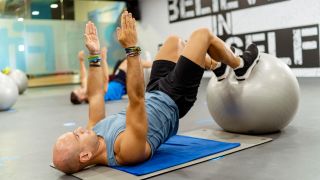
“This is a very good beginner bodyweight movement,” says Harbage. “It may look easy but it’s not! It can also be performed with your feet in the handles of a suspension trainer.
“Lie on your back and place your heels up on a gym ball. Dig your heels into the ball and stabilise by bracing the core. Ensure your hips are high, bridging off the ground, and pull your heels to your bum, rolling the ball from a straight leg to a bent leg.”
Glute bridge

This simple bodyweight move is a great option for beginners. As the name suggests, it mostly targets the glutes, but do your bridges with good form and you’ll also enlist the hamstrings. Lie on your back with your knees bent and your feet planted. Lift your hips until you form a straight line from your knees to your neck. Squeeze your glutes in the top position, then lower slowly. Make sure to drive your heels into the floor during the move to engage your hamstrings more effectively.
Intermediate Hamstring Exercises
Partner Nordic raise
“The Nordic raise is a classic hamstring exercise that can be easily adjusted to progress as you get stronger,” says Harbage. “It’s fantastic for injury rehabilitation and no equipment is needed.
“Kneel down with your body upright and have your partner place their hands on your ankles to keep them on the floor. Keeping your torso as straight as possible, lower your chest and hips down to the ground. Then pull yourself back up using your hamstrings.
“Most beginners will need to perform a kneeling press-up to get back up, because these are tough. Make sure to lower slowly and go as low as you can before assisting with the hands. As you get stronger, use less and less upper-body assistance.”
Barbell good morning
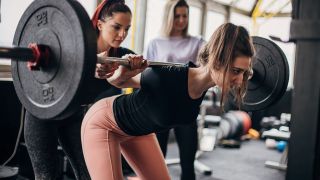
“A good morning is a great hamstring and glute exercise when done properly,” says Harbage. “Some people struggle to feel this because they have incorrect upper-body position and bend the knees too much.
“The barbell should be placed on the back of your neck, just like a back squat starting position. Your feet should be narrower than for a squat, with your toes and heels forming a square, and your knees bent slightly. Bring your shoulders forwards, hinge forwards and drive your hips back, keeping your back flat. When you feel tension in your hamstrings, pull your upper body back up to the starting position to reset, keeping your back straight throughout. To feel a greater stretch place your toes on a small weight plate.”
Kettlebell swing
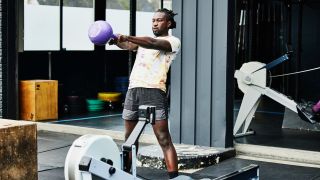
The kettlebell swing is a formidable compound exercise that works most of the muscles in your lower body, including your hamstrings. Stand holding a kettlebell in both hands in front of you, with your feet shoulder-width apart and knees bent slightly. Hinge forwards at your hips to swing the weight back between your legs, then drive your hips forwards to swing the kettlebell up to shoulder height. Control the weight as it swings back down between your legs and go straight into the next rep.
Advanced Hamstring Exercises
Romanian deadlift
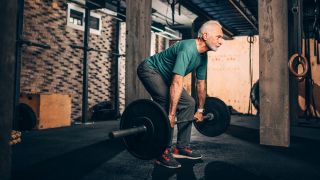
“Another classic hamstring exercise that, again, many people do incorrectly,” says Harbage. “Most people load up with too much weight and then fail to work the correct muscles. To start with, many people will find an empty bar is sufficient.
“Take hold of the bar and lift it to the top deadlift position. Your feet should be shoulder-width apart, or slightly narrower, and your knees should be slightly bent. Lower the bar, bending at your hips – the bar should shave your legs as you lower it. When you feel the tension in the hamstrings then pull directly up, like you’re pulling up a big pair of trousers, to return to the starting position, pushing your hips forwards and squeezing your glutes.
"Once you are comfortable with the movement, start adding weight.”
Barbell hip thrust

“The hip thrust is primarily a glute exercise, but there is also a good amount of hamstring activation during the move, especially when the upper body is propped up,” says Harbage.
“Place the barbell across your hips – you can use a mat or pad to protect the hip bones. Bend your knees at 90° with your body propped up on a bench or step – your upper back should be half on and half off. Lower your hips to the floor, then thrust them directly up. Your heels should be dug into the floor. Squeeze both the glutes and the hamstrings on every rep.”
Deadlift
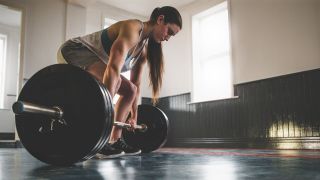
This is the quintessential posterior chain exercise, and it’s important to ensure your form is spot-on to reduce the risk of injury. Stand with a barbell on the floor in front of you. Push your hips back and bend your knees to reach down and take hold of the bar. Brace your core, then lift the bar by driving your hips forwards to come back up to standing. Lower the bar slowly back to the floor by reversing the movement. Maintain a flat back throughout.
More Ways To Train Your Hamstrings
- Five Hamstring Stretches To Keep Your Legs Loose
- The Best Hamstring Workout To Strengthen Your Hammies
- How To Do The Glute-Ham Raise

Nick Harris-Fry is a journalist who has been covering health and fitness since 2015. Nick is an avid runner, covering 70-110km a week, which gives him ample opportunity to test a wide range of running shoes and running gear. He is also the chief tester for fitness trackers and running watches, treadmills and exercise bikes, and workout headphones.
